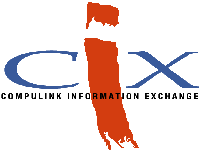An introduction to CIX and its history
Based in Croydon, South London, CIX (originally Compulink Information eXchange) is a trading name of ICUK offering advanced Internet communications for both the home and business user.
Our product range in very broad terms consists of:
Customers of CIX can take advantage of our world-class technical support with emails answered in minutes and telephone calls answered in seconds. Through the automation of a control panel, all hosting, Internet and telecom customers can configure their plan at any time or day or night, without the need to 'submit requests' for an operations engineer to action the request for them, allowing us to concentrate on improving the service further and focusing on new projects.
We are constantly seeking feedback on ways of improving the service and products that are on offer to customers. If you have any feedback on the products or service that we list on this site, please do not hesitate to contact us to voice your opinion.
Founded as Compulink User Group by Frank and Sylvia Thornley, it began life as a FidoNet bulletin board system initially intended to distribute public domain and shareware software, soon an early form of email was added and discussions broke out. At this point the Compulink BBS was the central node in the UK for Fidomail, using SEAdog to transfer email to and from the US via a dial-up modem connection.
CoSy was purchased from the University of Guelph, this was VMS code and was ported to Unix System V.3 running on an NCR Tower 32/200. Later this year the Conferencing / Email system went live for testing allowing up to 6 concurrent users via a mixture of Dowty Quattro 2400 baud and Hayes 1200/75 modems.
CIX (Compulink Information eXchange) was commercially launched.
CIX moved from Woodbridge Road, Guildford to The Sanctuary, Surbiton. CIX modems were now in the London dialling code so was a local for for a lot more people, there was still no dial-up Internet in the UK at this point.
CIX changed to using a Bleasdale computer based on a Motorola 68020 processor running Unix System V which could handle up to 72 concurrent modem connections. We would see all the modems online during the off-peak evening periods.
CIX moved to a Sequent S27 computer. This quad processor 80386 would handle 128 modem connections. We would still see all the modems online during off-peak periods.

Offline readers started to become popular with CIX. Various OLRs were written, Lucy and Nicola for AmigaOS and Matrix / CIXterm for DOS. This changed CIX dramatically,
making it much cheaper to use due to reduced dial-up costs, here was still no dial-up Internet in the UK at this time. This also allowed CIX to be used where there was no
connection.
Ameol is released in early 1993. Later that year Ameol is purchased by CIX and becomes the first official OLR. Dial-up Internet starts to become popular.

CIX starts its own dial-up Internet service, CIX Internet, using US Robotics Total Control racked modems / ISDN adaptors. CIX also sees a rebranding.
0845 Local call numbers for much of the country introduced for CIX and CIX Internet.

Management buy-in backed by Legal & General Ventures.
CIX Conferencing moves to a Sun E250 running Solaris, all CIX's servers and modems now hosted in Telehouse.
CIX Relocates to Epsom.

In 2000 CIX was sold to Telenor, a Norwegian telecommunications company. CIX was re-branded and merged with XTML of Manchester and Norsk Data of Newbury to form the UK arm of Nextra, the UK Internet subsidiary of Telenor.
WCS (Web Conferencing System) released. First Web-based interface for CIX goes live.

CIX Conferencing management was out-sourced by Nextra to Parkglobe Consultants which was made up of ex-CIX staff. Later, the entire business was sold to GX Networks aka Pipex with the outsourcing remaining.

CIX Forums released with new branding. Version 2 of the Web-based interface for CIX goes live driven by a REST API.

On 25 May 2011, CIX Online Ltd. was purchased by ICUK, an ISP, hosting and telecoms provider formed in November 2001 by an ex-employee of CIX.